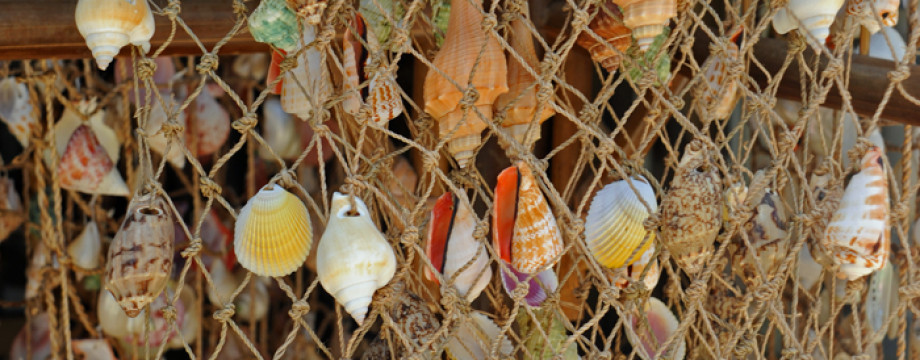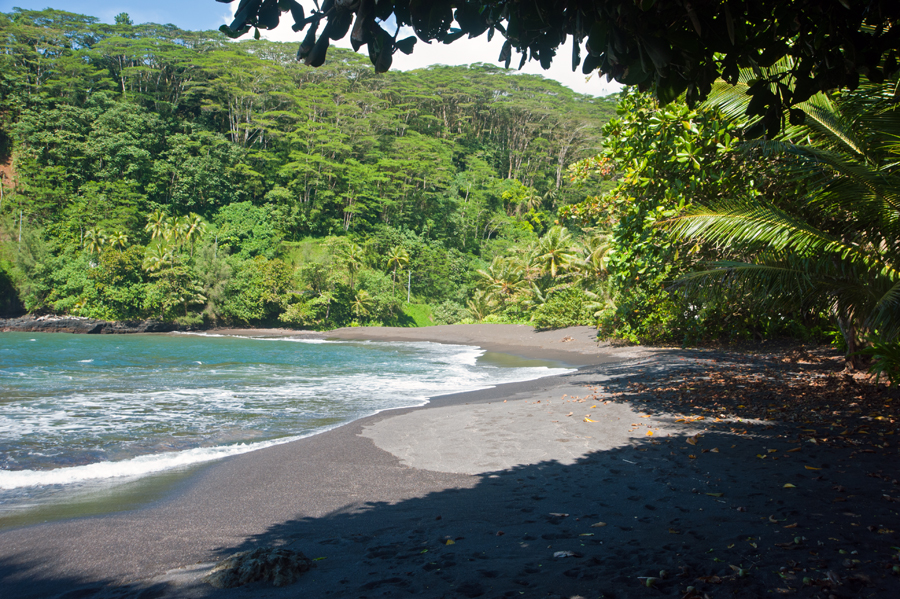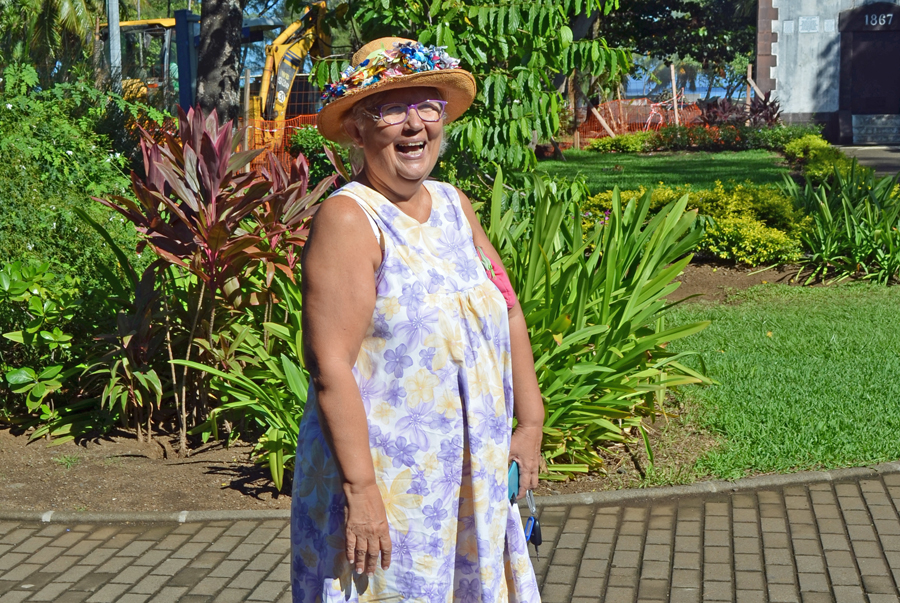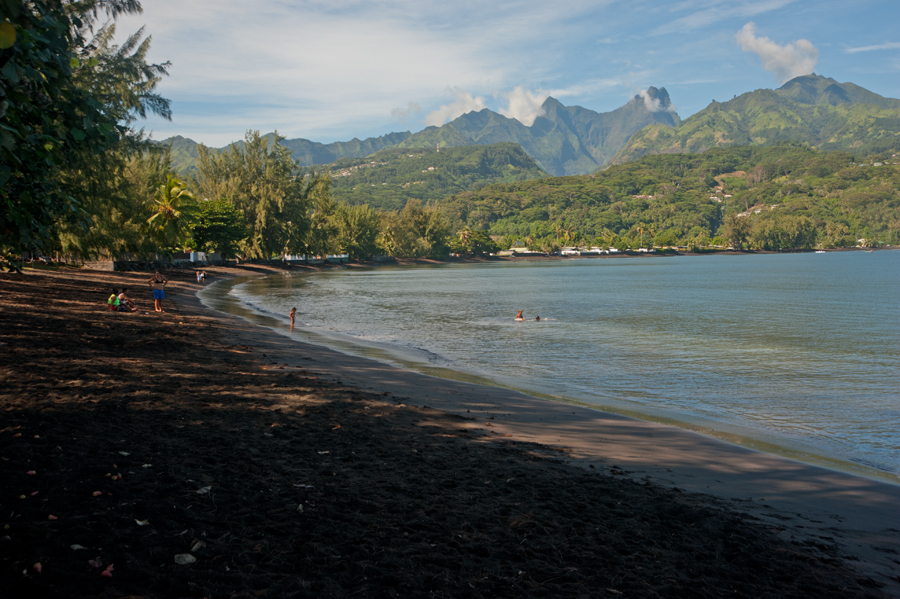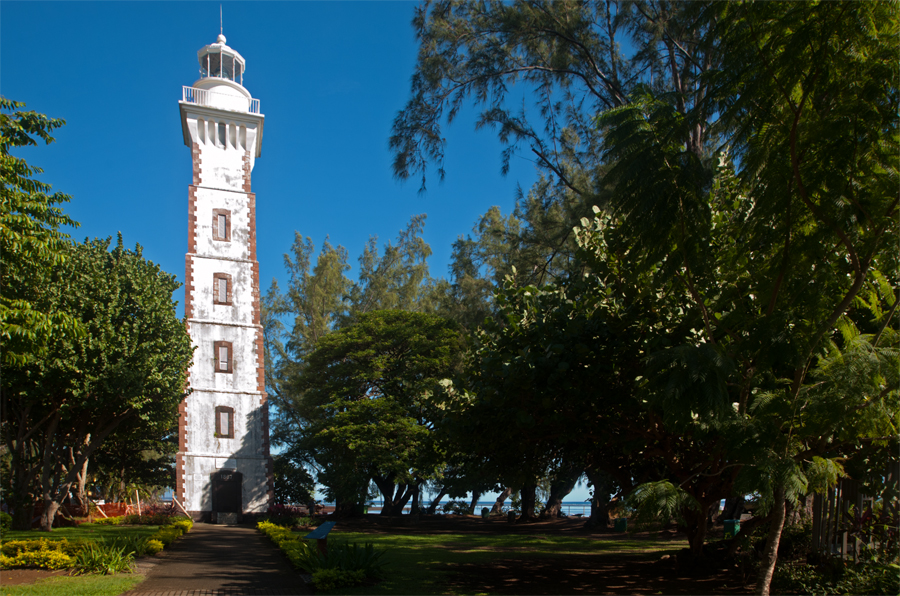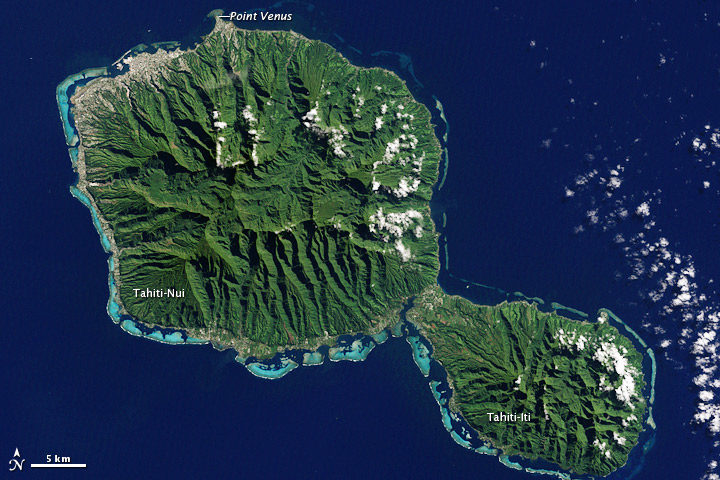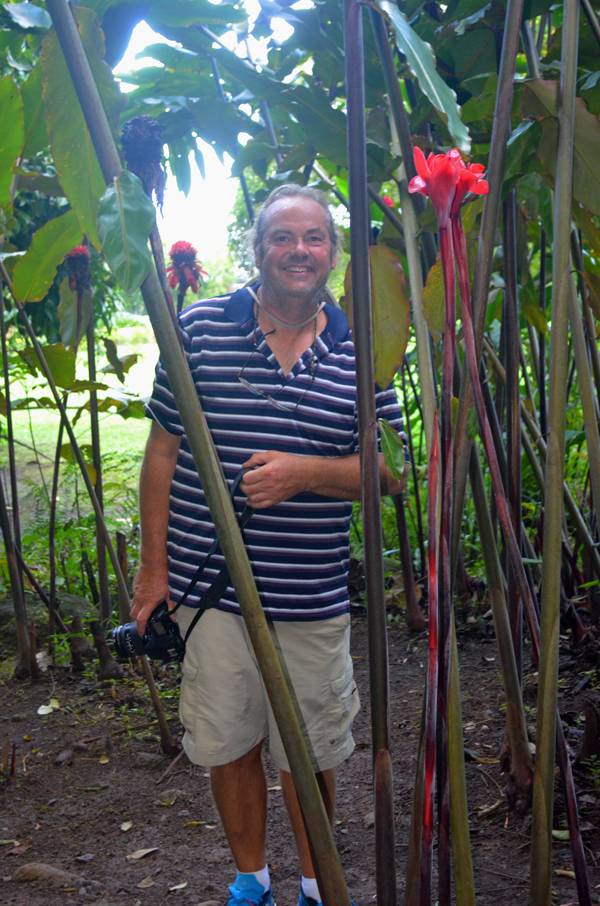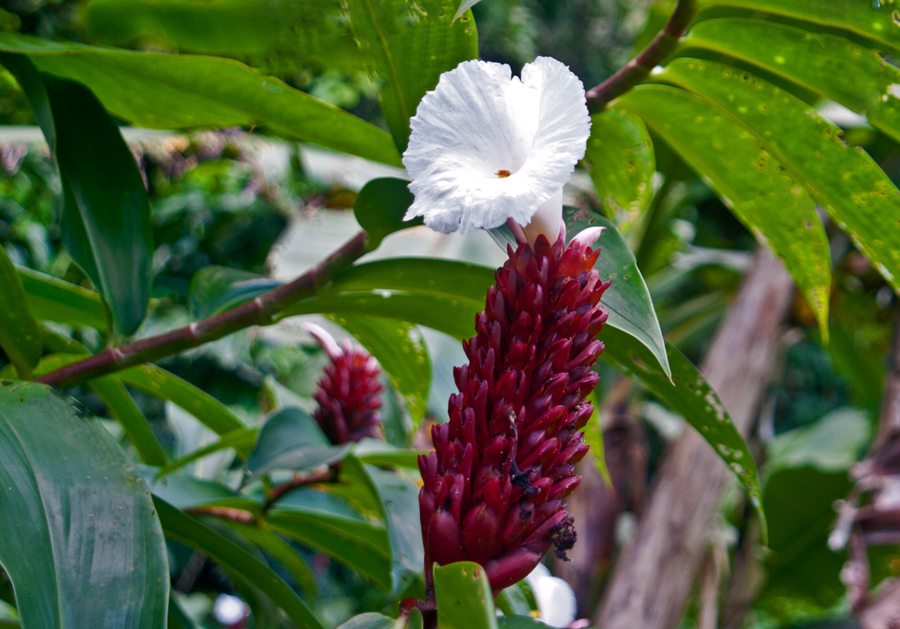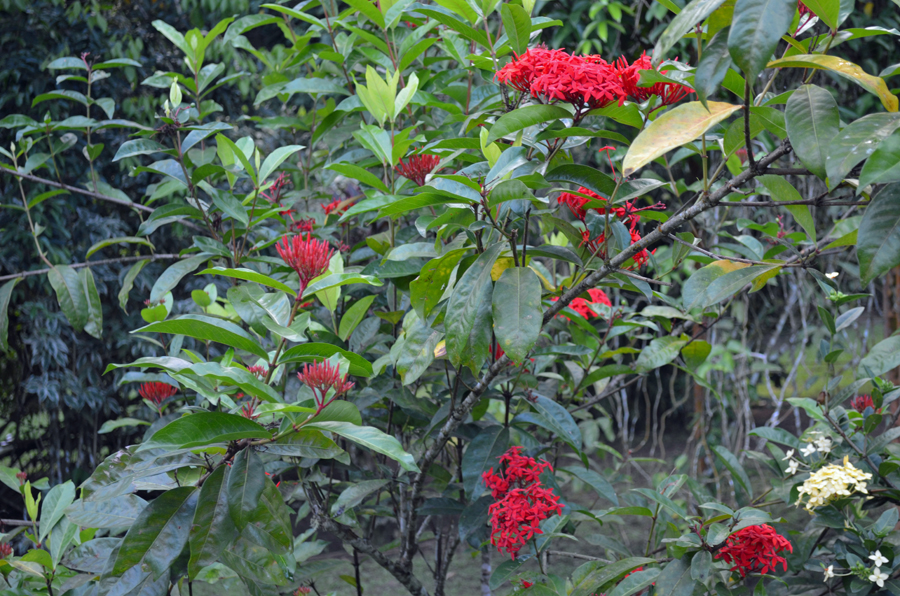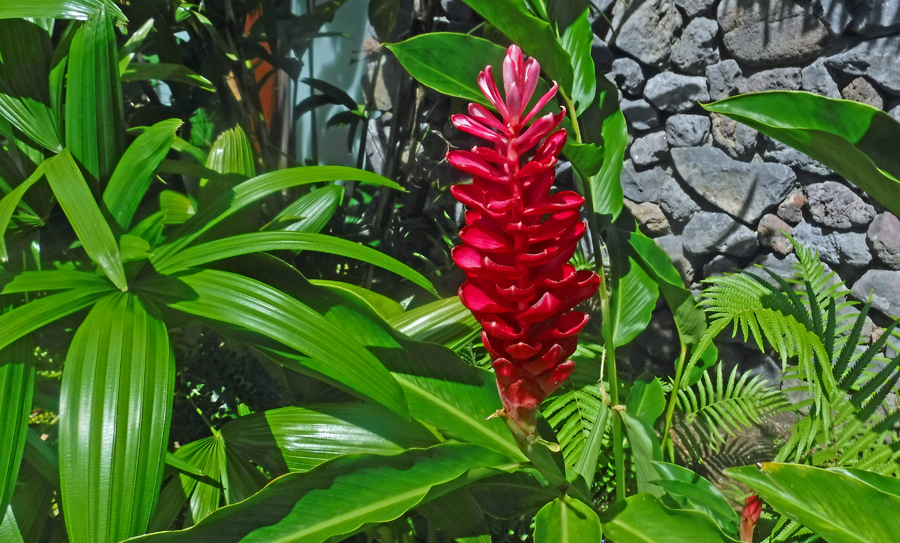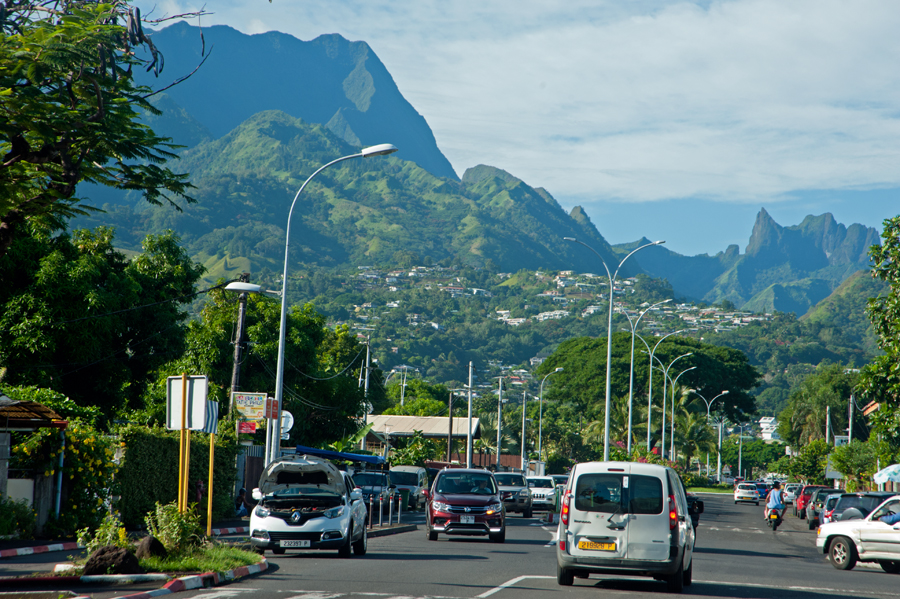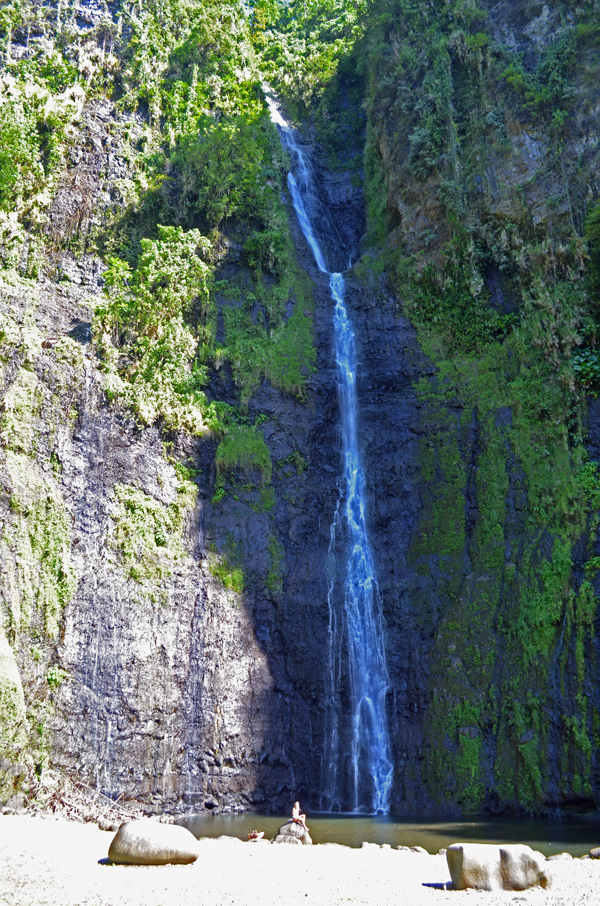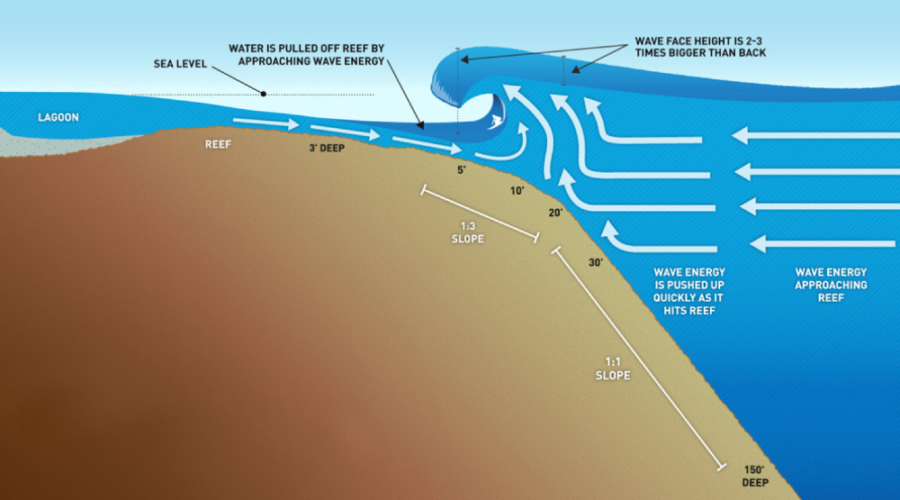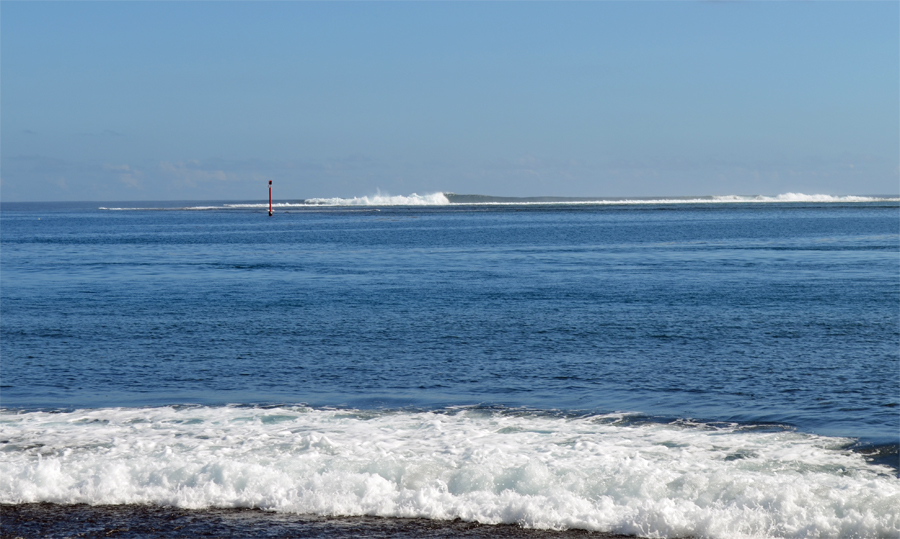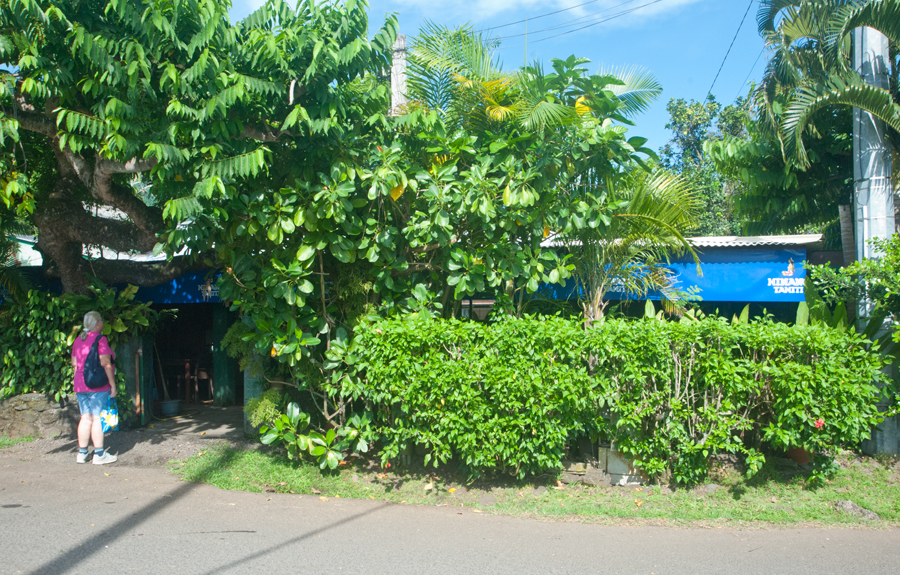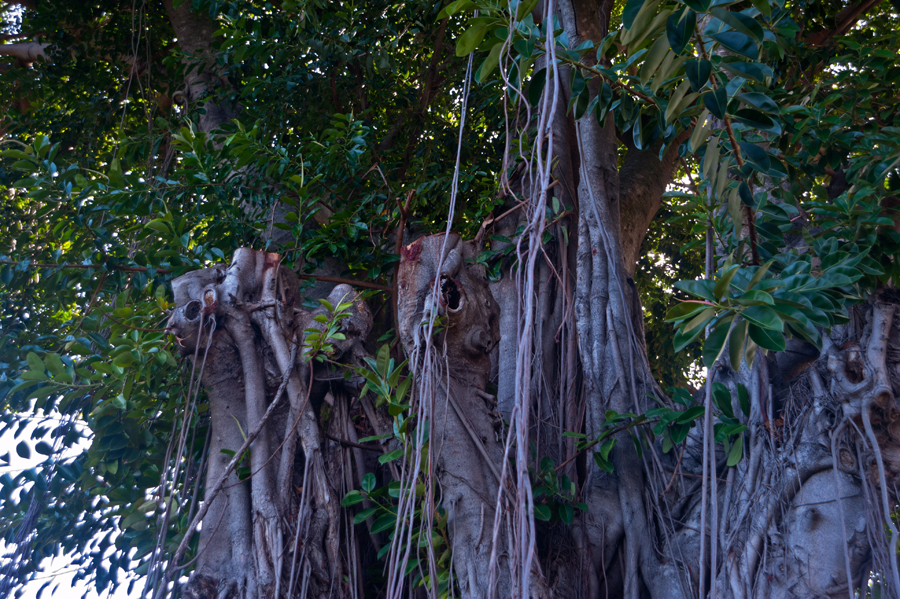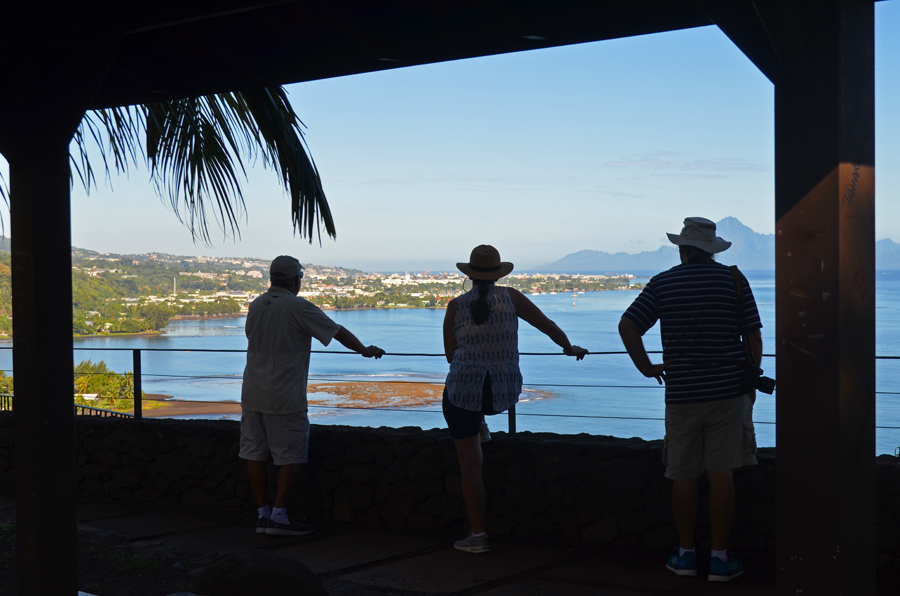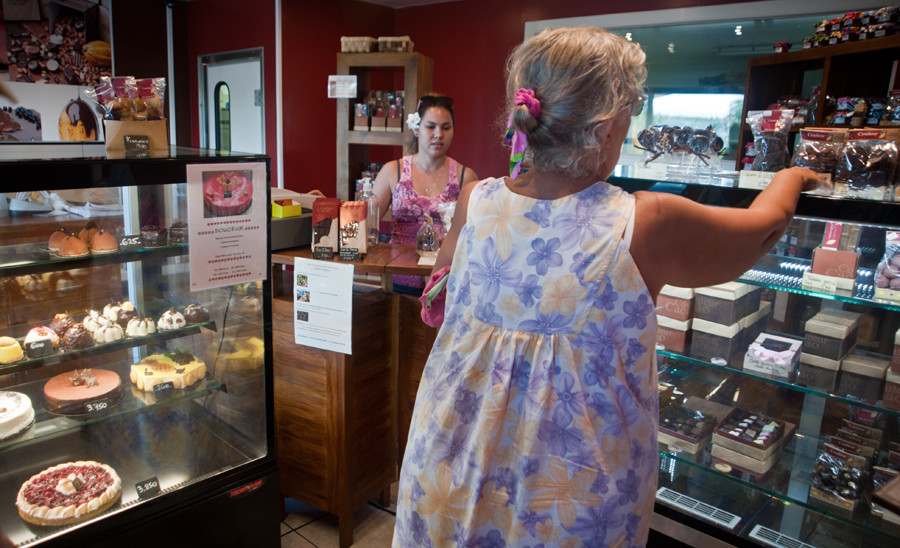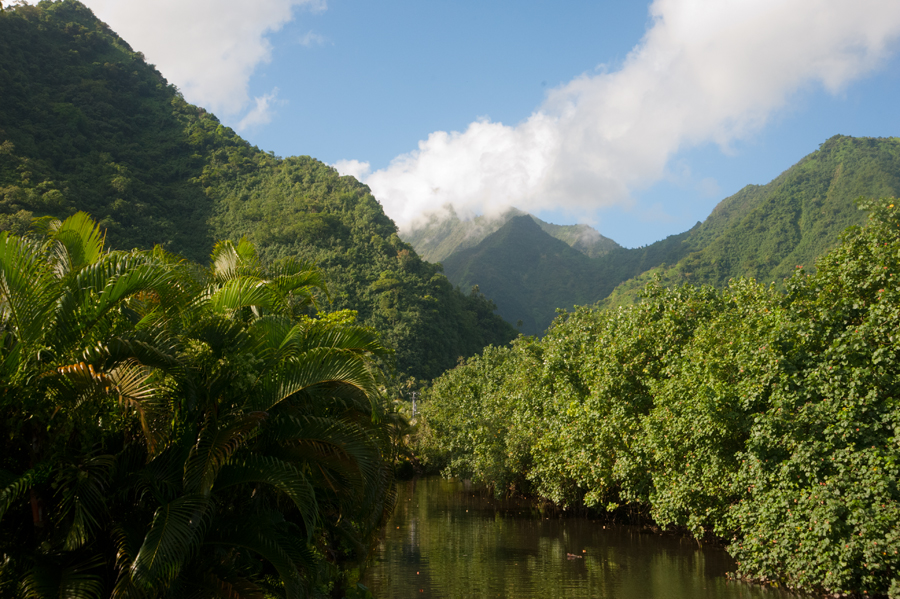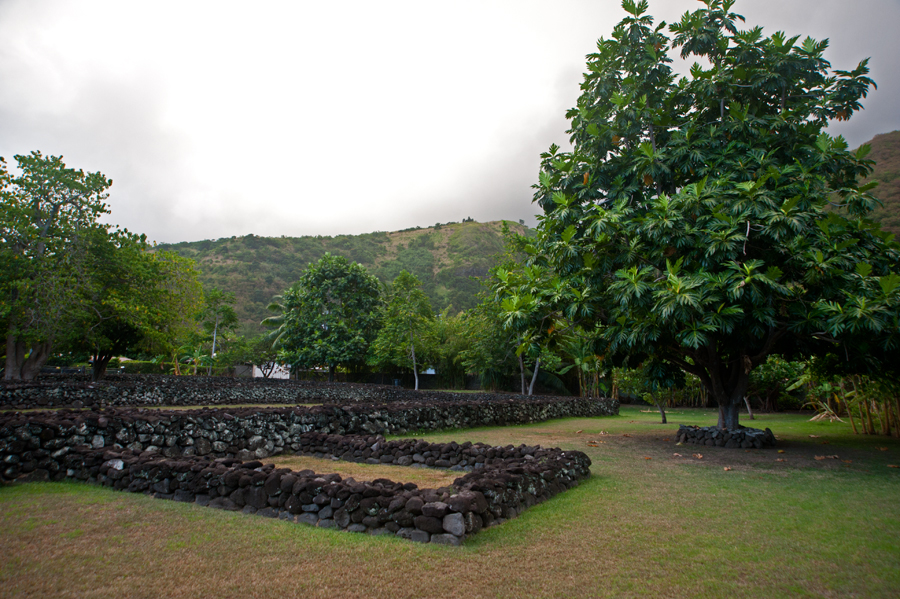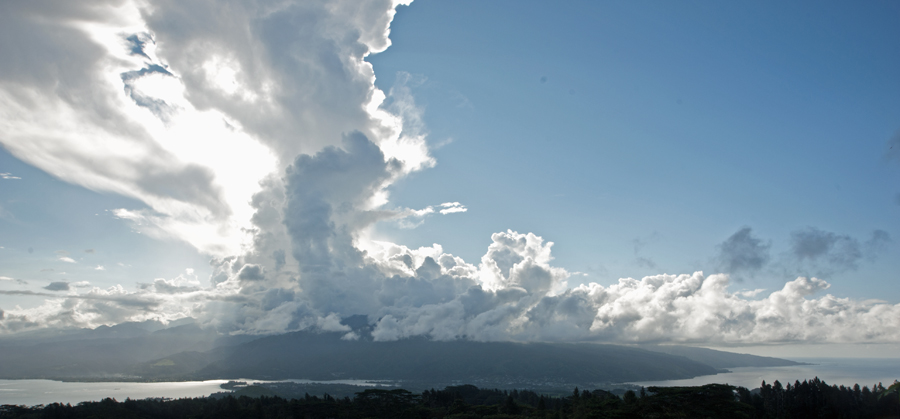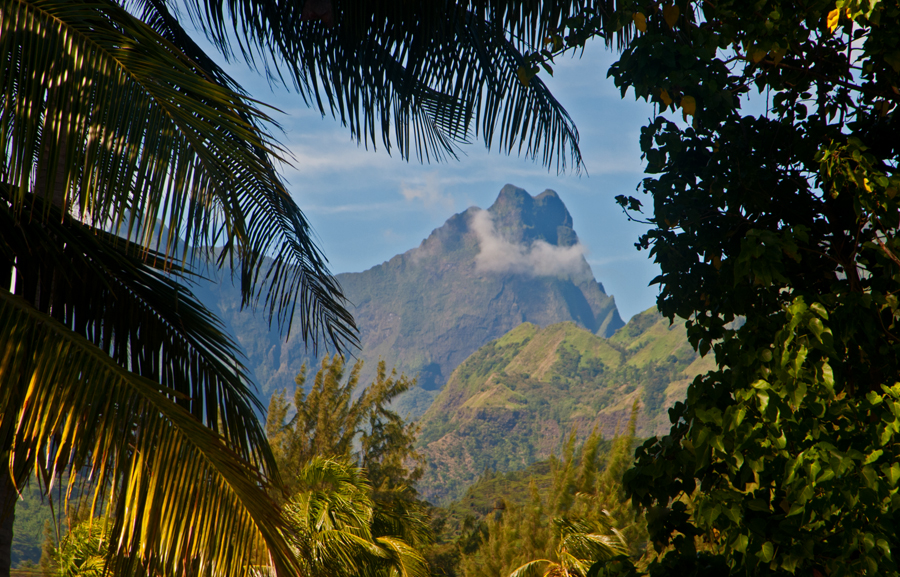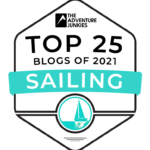Tahiti is beautiful! We have been out and about on the island. The scenery is stunning.
Meet Corinne Mc Kittrick, PHD, our tour guide for the day. Corinne can trace her ancestry on Tahiti back to the 1800’s and has her doctorate in Polynesian Languages & Civilization. How much did we enjoy the tour? This is Cindy’s review for FaceBook and the Tahiti Cruisers Guide:
Excellent personalized tour covering the entire island of Tahiti. Corinne is very knowledgeable and loves to share her vast knowledge in a very personable tour. The tour is a maximum of 4 people because that is how many fit into her car. Corrine is an absolutely lovely lady born in Tahiti. She has good humor and speaks excellent English. Corinne will tailor the trip to your needs. Some of the highlights: waterfalls, a cave, gardens, ancient temple, Polynesian stories, different plants, and their medicinal uses, beaches, and more. The tour is relaxing and not rushed.
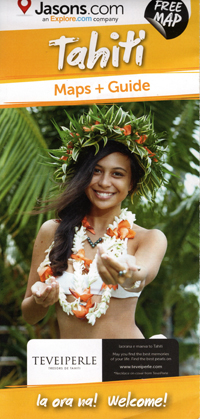
Our tour started at 8:00am and ended around 5:30pm (we were back around 6:00pm ). Corinne included a bottle of water for each of us. Lunch was at a local restaurant and was fabulous and reasonably priced (not included in fee). Part of the fun was that Corinne added a few personal stops along the way; a veggie stand that she likes, a chocolate shop, and a local artisan trinket store near the restaurant. If you book directly through Corinne the fee is a bit lower than booking through other sources. I highly recommend this tour.
Corinne’s information is posted in the Tahiti Cruiser’s Guide by SV Jacaranda. Chuck and Linda: Thanks for the great referral.
We learned so much about French Polynesia. There is not a lot that has happened on this island she doesn’t know about. Her husband’s Granddaughter is the face of Tahiti who greets visitors on the island as she is the cover model on the road map and guides handed out at the airport (left).
One of the fun facts I enjoyed was when we went to Pointe Vénus. As Cindy and I were arriving in Tahiti after 29 days at sea, we considered stopping at Matavai Bay near Pointe Vénus because the sun was getting low on the horizon and we were a little unsure if we could still make the anchorage on the west side of Tahiti in the daylight hours. As it turned out, the Covid-19 restrictions prohibited us from doing so and all arriving private vessels were required to head to designated spots for the check-in process. If we had anchored this bay, our boat would have joined the company of some very historic vessels.
Matavai Bay is the landing site of Samuel Wallis aboard Dolphin in 1767. The first European to discover and set foot upon Tahiti. James Cook aboard Endeavour in 1769 is a famed British cartographer who is known for his work mapping the Pacific Ocean. And perhaps the most famous person of all (thanks to Hollywood), Captain William Bligh aboard Bounty in 1788 reached Tahiti on 26 October after ten months at sea. Bligh and his crew spent five months in Tahiti. They established a nursery at Pointe Vénus, collecting and preparing 1015 breadfruit plants to be transported.
I really do not understand why they wanted breadfruit plants. Have you ever tasted breadfruit? We were first introduced to breadfruit in Grenada. It is a staple in a traditional dish there called oil down. If I recall correctly oil down is the national dish of Grenada. Bligh allowed the crew to live ashore and care for the potted breadfruit plants, and they became socialized to the customs and culture of the Tahitians. Bounty departed with her breadfruit cargo on 4 April 1789. Twenty-four days later was when the famous mutiny occurred by a part of his crew and Bligh was cast off in an open longboat.
Perhaps we will take Cream Puff to visit Matavai Bay and Pointe Vénus when we depart Tahiti. This way we can say we anchored in the exact same spot as Captain Bligh 232 years later. Hopefully, I can avoid the mutiny.
Speaking of plants…
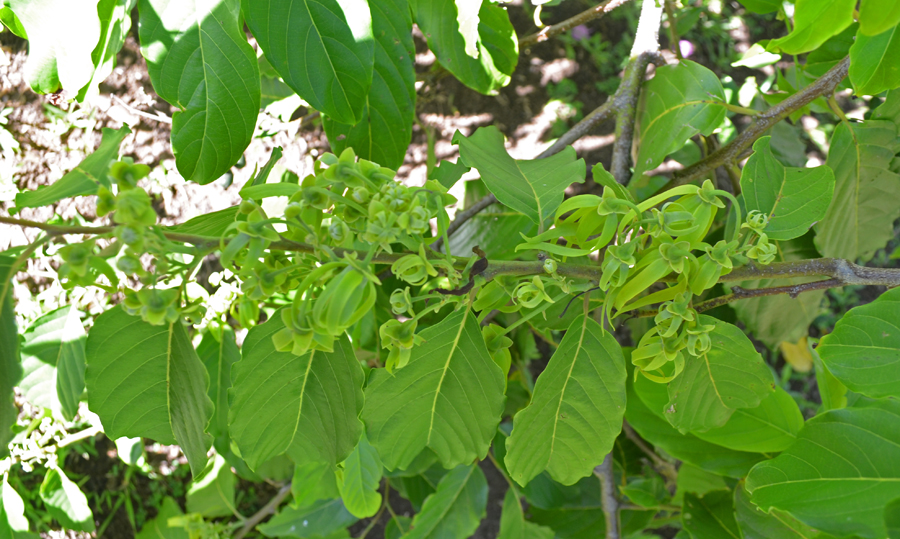
This green flower is extremely fragrant. Corinne will put just one in her car as an air freshener. They smell incredible!
You might be surprised to read that Tahiti has some issues. It is not the idyllic island many tourists believe it to be. While on the tourist’s path, visitors are isolated from social issues facing this beautiful island. Some of the Tahitians live in extreme poverty in homes that barely keep out the rain. During our tour, Corinne stopped to give some books to a young boy. She told us he had an incredibly bright mind and is trying to encourage him to do well in school and hope he can get into an engineering program. The French/Tahitian education system is fantastic, however, for a young boy living in a remote part of the island, there are going to be challenges.
We have previously read how Tahiti has a drug and alcohol problem. A ban on Alcohol sales was the last restriction lifted once the all-clear sounded from Covid-19. On our walks about town, we are often hit up for loose change. During a recent walk to the market, I noticed locals walking in the street to avoid four panhandlers on the sidewalk. On outer islands, cruisers are warned not to trade liquor with the locals. Many boats arrived with a couple of cases of booze stashed away to avoid the Tahitian high prices. We do not have limits on how much we can carry aboard but it is made very clear in the customs declaration it must be for our personal use. Trading booze can result in serious fines. When taking the picture below, I asked Corinne if she would stop so I could get out. She suggested we drive a little bit further unless I wanted to buy drugs.
One of the policies I find interesting on Tahiti is the government’s stance on unemployment. If a person is unemployed and granted benefits, they must work a few days each week as a laborer. They are given jobs trimming hedges by the roadside or picking up trash. This use of available labor goes a long way to keeping the island clean and beautiful. I can’t help but wonder what the outcry would be in the USA if the Department of Labor instated a similar policy.
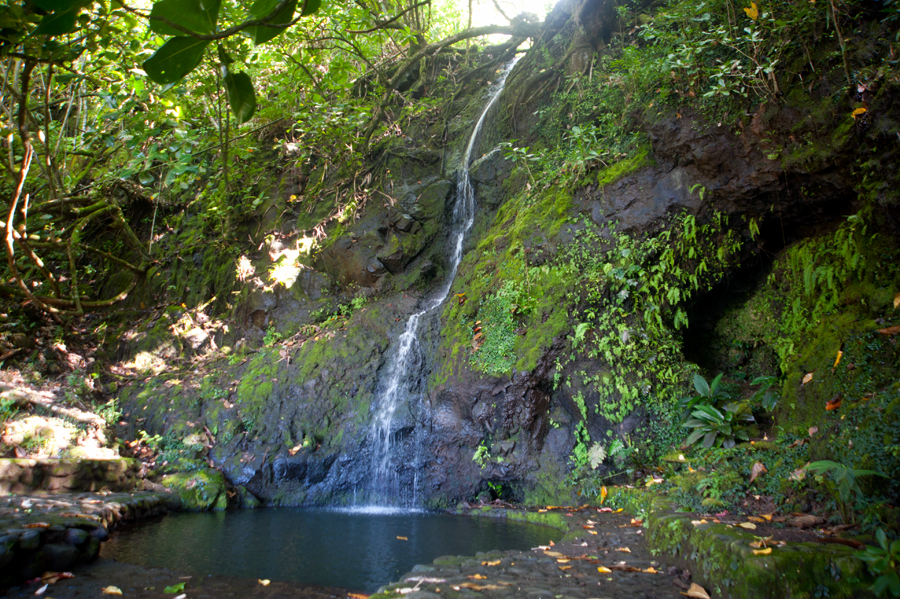
This little waterfall is just off the road on the sunrise side of the island. Locals will stop for a quick swim to cool off and then continue on their journey

The hike to Vaimahuta falls in itself is really beautiful. This ornate bridge is at the beginning of the trail
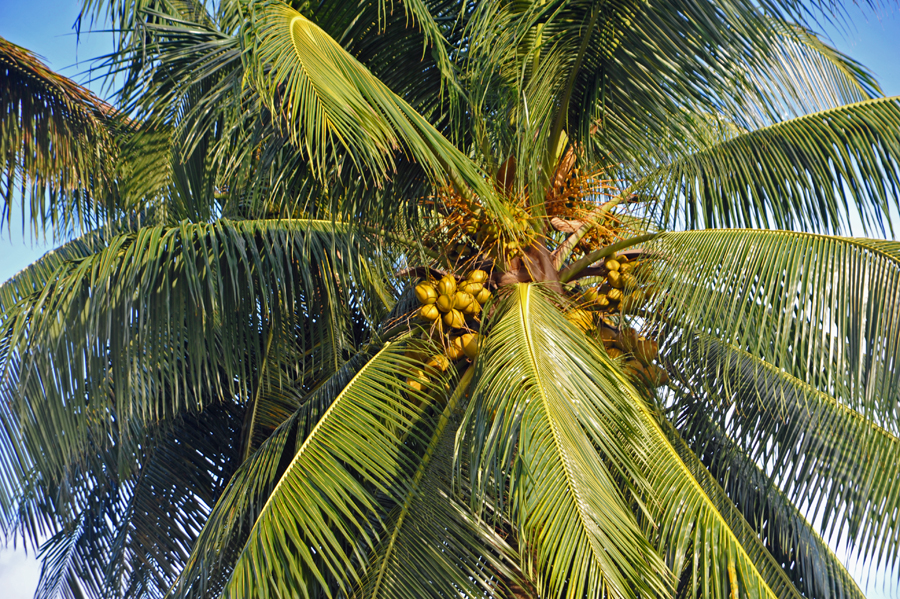
Island Lessons 101: Never stand or sit (or park your car) under a palm tree. This one is locked and loaded with ammunition
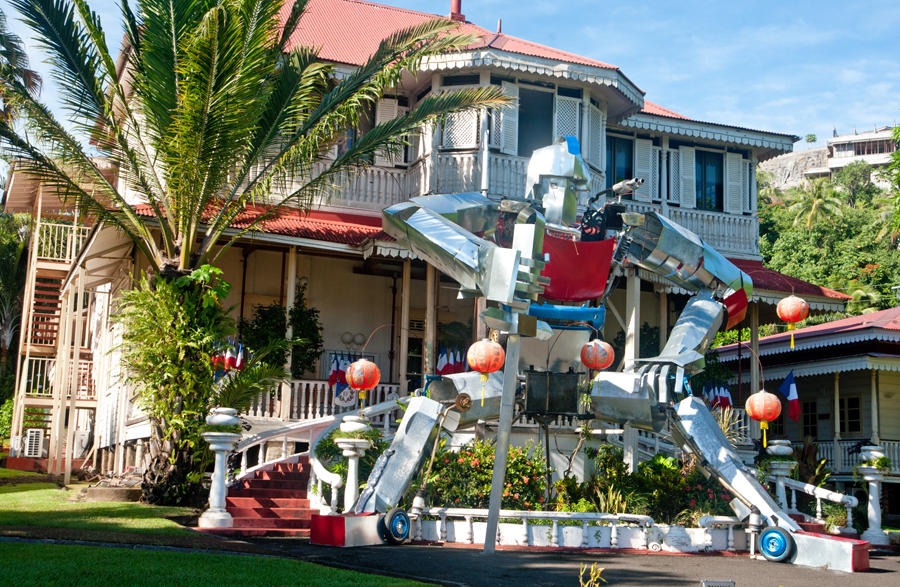
And then there is this! The town hall of Mairie de Arue complete with giant robot thingamajig and Chinese lanterns
An awe-inspiring place on Tahiti is Teahupo’o, a village on the southwestern coast world-famous in the surfing community for the waves offshore. Waves often reach 2 to 3 meter, and sometimes up to 7 meters. A sign on the beach reads:
The most dangerous wave in the world! The Teahupo’o wave is sudden, fast and powerful. When reaching its peak it is so sudden that surfers cannot paddle to ride it, they have to be towed by jet-skis. So fast it overtakes you, traps you deep in the tube, creating a frightening vacuum. So powerful it engulfs under tons of water.
An extraordinary spot, with razor sharp coral reef under our feet and over your head, the most incredibly thick and powerful lip seen. Its 6 meter tube is so wide it could contain 2 trailers! Furthermore, this almost perfect wave makes it hard to escape. Every year this spot has its victims. Only talent and technical mastery allow you to make it out alive.
From the shore, the wave looks pretty harmless. This is because the wave dips below sea level as the tube is formed. This part of the sign explains the mechanics:
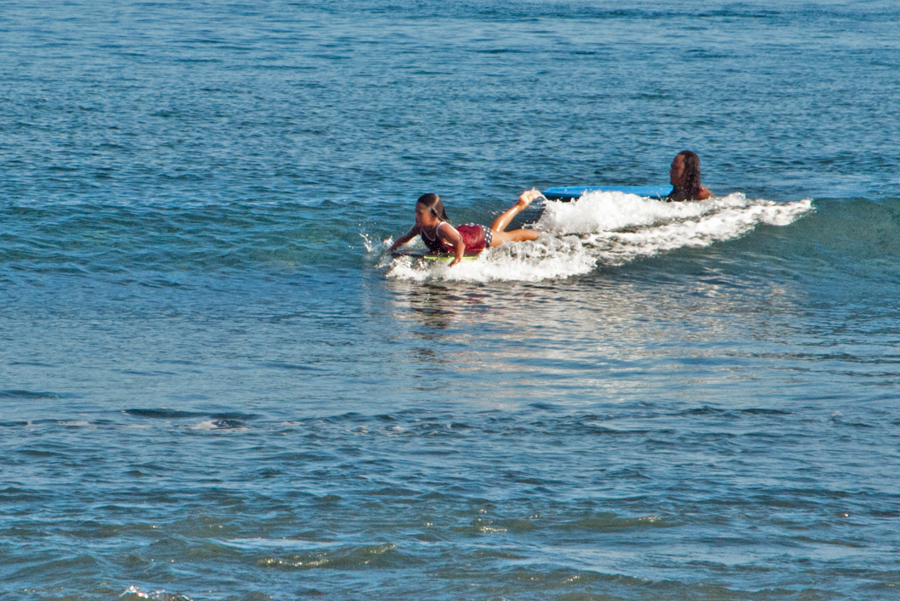
Closer to the shore near the Teahupo’o wave, a dad teaches his daughter to surf. Makes we wonder if someday she will go do the Teahupo’o.
Back on the boat, I searched for a video so I could really understand the danger of the wave. One look at this and you can easily understand how “Every year this spot has its victims”.
If you do not see the movie above, click here.
One of the great things about hanging out with a local is lunchtime. I love it when we get to eat at a place so far off the tourist path, it isn’t even on TripAdvisior. Well, it’s barely on TripAdvisor. It has one review. Deservingly, it is a 5-star review. Corinne called ahead to the restaurant. She explaines how sometimes they are unexpectedly closed. If they have a busy weekend and had to work especially hard, sometimes they don’t open again until Wednesday. I love this about the islands we visit. Lucky for us, they decided to open. The restaurant is called Snack Tavania. In all honesty, if Corinne hadn’t parked the car and shown us inside, I would never have known the building was a restaurant.
Inside Tavania, the dining is inside/outside. A lot of restaurants on the island are like this. The seating is undercover protected from the sun and rain like a wraparound porch. The food was incredible. Cindy had local shrimp cooked in coconut milk. I had sashimi tuna. The local dog curled up under our table and slept while the occasional bird stole a French-fry if we let our guard down.
We have seen some pretty strange plants since we’ve been here. We saw our first rubber tree. I get so excited about seeing things for the first time. Seeing seahorses in Bonaire, carnival in Grenada, sloths in Panama, coffee plants, transparent butterflies, whales, monkeys, and on Galapagos giant tortoises are all pretty cool things. So, I am not sure why a rubber tree was exciting to me but I was kind of thrilled when it was pointed out. Funny, but I was more interested in the tree than the awesome view from the scenic overlook where we stopped.
Corinne made some stops on our tour. She had a couple of errands to do and lucky for us she worked them in. I say lucky for us because one of the errands was buying some chocolate. We stopped at a little shop, the building looked to me to be industrial. Upon closer look, there were several stores of which one is a chocolatier and bakery. We discovered this is the wholesaler who makes chocolate, tarts, and pastries for the shops on the island. While the store was quite small, the kitchen next door was huge. Again, nice to have the inside knowledge. And, you know darn well we made a purchase. Yum!
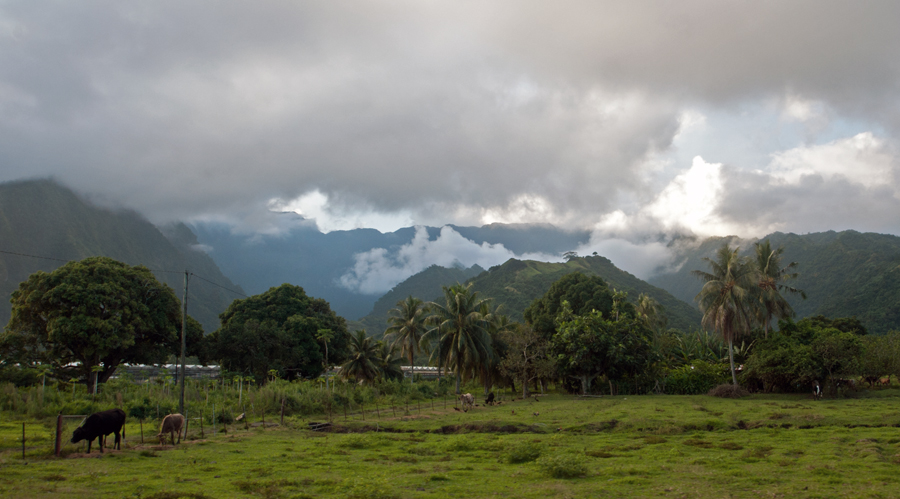
More often than not, clouds cover the peaks of the island. I think it is cool when you see them low over the valleys
On our journey about the island, we saw awesome waterfalls, lush gardens, an ancient temple site, and some incredible beaches. Many of the places we visited, Cindy and I agreed we need to rent a car and go back so we can have a little bit more time to explore. No doubt we’ll be heading to Tavania again for lunch. Who knows, perhaps we might even stop for some chocolate or a cake. You know I already have a pin in the map and directions on how to get there again.
